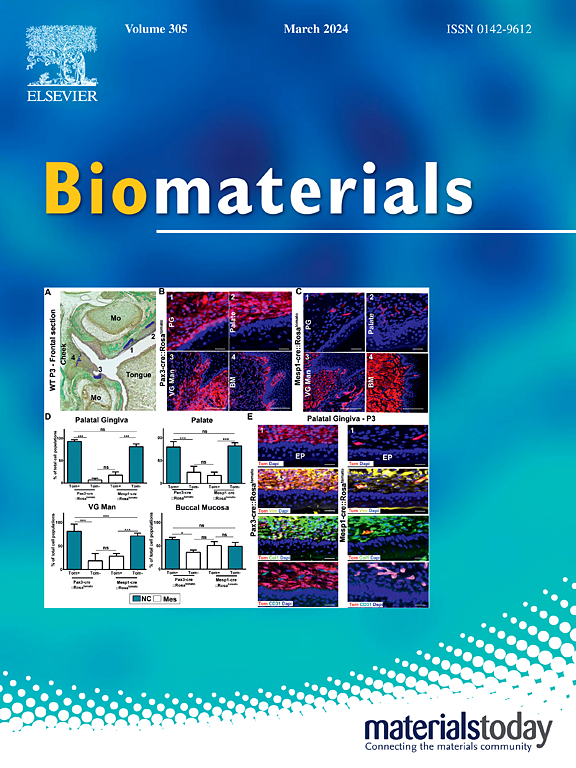Two-dimensionally cultured functional hepatocytes generated from human induced pluripotent stem cell-derived hepatic organoids for pharmaceutical research
IF 12.8
1区 医学
Q1 ENGINEERING, BIOMEDICAL
引用次数: 0
Abstract
Human induced pluripotent stem (iPS) cell-derived hepatocyte-like cells (HLCs) are expected to replace primary human hepatocytes (PHHs) as a new stable source of hepatocytes for pharmaceutical research. However, HLCs have lower hepatic functions than PHHs, require a long time for differentiation and cannot be prepared in large quantities because they do not proliferate after their terminal differentiation. To overcome these problems, we here established hepatic organoids (iHOs) from HLCs. We then showed that the iHOs could proliferate approximately 105-fold by more than 3 passages and expressed most hepatic genes more highly than HLCs. In addition, to enable their widespread use for in vitro drug discovery research, we developed a two-dimensional culture protocol for iHOs. Two-dimensionally cultured iHOs (iHO-Heps) expressed most of the major hepatocyte marker genes at much higher levels than HLCs, iHOs, and even PHHs. The iHO-Heps exhibited glycogen storage capacity, the capacity to uptake and release indocyanine green (ICG), albumin and urea secretion, and the capacity for bile canaliculi formation. Importantly, the iHO-Heps had the activity of major drug-metabolizing enzymes and responded to hepatotoxic drugs, much like PHHs. Thus, iHO-Heps overcome the limitations of the current models and promise to provide robust and reproducible pharmaceutical assays.
求助全文
约1分钟内获得全文
求助全文
来源期刊

Biomaterials
工程技术-材料科学:生物材料
CiteScore
26.00
自引率
2.90%
发文量
565
审稿时长
46 days
期刊介绍:
Biomaterials is an international journal covering the science and clinical application of biomaterials. A biomaterial is now defined as a substance that has been engineered to take a form which, alone or as part of a complex system, is used to direct, by control of interactions with components of living systems, the course of any therapeutic or diagnostic procedure. It is the aim of the journal to provide a peer-reviewed forum for the publication of original papers and authoritative review and opinion papers dealing with the most important issues facing the use of biomaterials in clinical practice. The scope of the journal covers the wide range of physical, biological and chemical sciences that underpin the design of biomaterials and the clinical disciplines in which they are used. These sciences include polymer synthesis and characterization, drug and gene vector design, the biology of the host response, immunology and toxicology and self assembly at the nanoscale. Clinical applications include the therapies of medical technology and regenerative medicine in all clinical disciplines, and diagnostic systems that reply on innovative contrast and sensing agents. The journal is relevant to areas such as cancer diagnosis and therapy, implantable devices, drug delivery systems, gene vectors, bionanotechnology and tissue engineering.
 求助内容:
求助内容: 应助结果提醒方式:
应助结果提醒方式:


